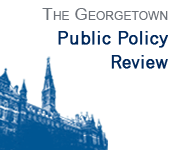 This summer featured the latest installment of the ongoing EPA Integrated Risk Information System (IRIS) reform saga. EPA’s IRIS program produces chemical assessments that evaluate the health effects of chemicals in the environment and commerce, specifically determining the level at which a given chemical presents a potential public health risk. These assessments serve as the underpinnings of EPA’s regulations, so it should come as no surprise that the release of an assessment (or draft assessment) is often accompanied by a tide of opposition from interested parties who stand to be impacted by potential regulation.
This summer featured the latest installment of the ongoing EPA Integrated Risk Information System (IRIS) reform saga. EPA’s IRIS program produces chemical assessments that evaluate the health effects of chemicals in the environment and commerce, specifically determining the level at which a given chemical presents a potential public health risk. These assessments serve as the underpinnings of EPA’s regulations, so it should come as no surprise that the release of an assessment (or draft assessment) is often accompanied by a tide of opposition from interested parties who stand to be impacted by potential regulation.
Since its inception in 1985, IRIS has faced a series of roadblocks. Under the Bush Administration, IRIS confronted heavy-handed involvement by external parties, particularly the Office of Management and Budget (OMB). OMB’s far-reaching oversight and review contributed to the production of assessments being slowed to a glacial pace. In fact, an April 2008 Government Accountability Office (GAO) report warned that under the Bush administration, IRIS was at serious risk of becoming obsolete because of its inability to complete timely, credible assessments or reduce its backlog: only four assessments were completed in fiscal years 2006 and 2007 combined.
At the dawn of the Obama Administration, EPA Administrator Lisa Jackson introduced a set of reforms in 2009, which included streamlining the IRIS review schedule, ensuring that the majority of assessments would be posted within two years of the start date, restricting the ability of other federal agencies to request suspension of an assessment process, making public all written comments from other agencies and White House offices, and generally increasing EPA’s autonomy.
Fast-forward to this summer’s round of debates over IRIS reform, prompted by the June 2010 release of the draft assessment of formaldehyde, which, among other things, concluded that the chemical is a human carcinogen. Unsurprisingly, the draft assessment was met by uproar from the chemical industry, as well as from Senator David Vitter (R-La), who in 2009 requested that the National Academy of Sciences (NAS) examine the formaldehyde draft assessment process. (Interestingly, Vitter was recently awarded the American Chemistry Council’s “distinguished leadership award”.) The NAS review of the draft assessment, points out some methodological shortcomings, but ultimately supports EPA’s determination that formaldehyde is known to cause cancer in humans. While the NAS review never called for halting of assessments or doing away with the program, industry (and its Congressional allies), has made this particularized debate a referendum on the IRIS program writ large. Until the formaldehyde assessment is finalized, EPA will continue to list formaldehyde as only a “probable” carcinogen, which prevents it from issuing more rigorous regulations on the chemical – a delay that has very real public health consequences.
In mid-July, the House Committee on Science, Space, and Technology, Subcommittee on Investigations and Oversight held a hearing on IRIS. Among the individuals offering testimony were representatives from EPA itself, other federal agencies, industry, and public interest groups. Overall, the tenor of the hearings was in keeping with historical commentary on IRIS, with industry calling for more “independent” review of assessments, more involvement by other federal agencies (OMB review in particular has historically had a nearly paralyzing effect on the assessment process), and the use of more timely, scientific data – an attempt to corner EPA into using industry-backed studies.
And so, as is all too often the case in regulatory endeavors, a discussion about reform that should have been for the benefit of the public has been hijacked by industry. Thus, there appears to be little hope for untangling industry’s use of vague (and at first glance, even beneficial) concepts like improving procedure and using the latest science, from the fact that they are in actuality a guise for altering a regulatory process in its own favor. Ultimately, we would hope that Congress and the Administration would see through the veneer, exposing what such calls for reform truly seek to accomplish. Unfortunately, such bold moves seem extremely unlikely in light of the Administration’s latest concession in favor of industry and in abandonment of the public interest.
Established in 1995, the Georgetown Public Policy Review is the McCourt School of Public Policy’s nonpartisan, graduate student-run publication. Our mission is to provide an outlet for innovative new thinkers and established policymakers to offer perspectives on the politics and policies that shape our nation and our world.
